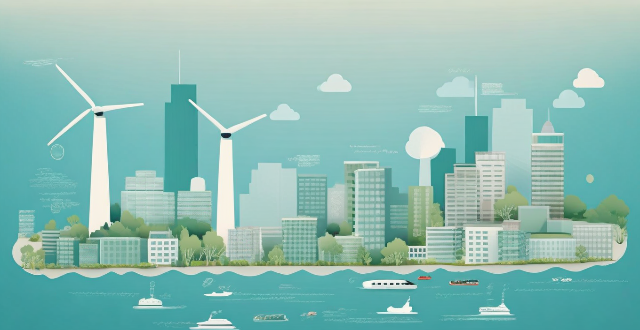The climate emergency, primarily caused by human activities, has significant economic implications affecting various sectors of the global economy. These include impacts on natural resources such as water scarcity, soil degradation, and energy supply; loss of biodiversity affecting ecosystem services and tourism; reduced crop yields and livestock production affecting agriculture and food security; risks to infrastructure and urban areas from flooding and heat waves; direct and indirect effects on human health; and broader impacts on global economic growth and international trade. Addressing these challenges requires coordinated efforts from governments, businesses, and individuals around the world to reduce greenhouse gas emissions and adapt to the changing climate.

What are the Economic Implications of a Climate Emergency?
A climate emergency refers to the rapid and severe changes in the Earth's climate system, primarily caused by human activities such as burning fossil fuels, deforestation, and industrial processes. These changes can have significant economic implications, affecting various sectors of the global economy. In this article, we will explore some of the key economic implications of a climate emergency.
Impact on Natural Resources
Depletion of Resources
- Water Scarcity: Changes in precipitation patterns can lead to droughts and water scarcity, affecting agricultural productivity and food security.
- Soil Degradation: Extreme weather events and changing temperatures can cause soil degradation, reducing land availability for farming and other activities.
- Energy Supply: As traditional energy sources become more expensive or unavailable due to climate change, there may be increased reliance on renewable energy sources, which could impact energy prices and infrastructure investments.
Loss of Biodiversity
- Ecosystem Services: The loss of biodiversity can reduce the ability of ecosystems to provide essential services such as pollination, nutrient cycling, and coastal protection.
- Tourism: Many regions rely heavily on tourism, which is often dependent on natural attractions like coral reefs, forests, and wildlife. Climate change can negatively impact these resources, reducing tourism revenue.
Impact on Agriculture and Food Security
Crop Yields and Quality
- Decreased Productivity: Rising temperatures and changing rainfall patterns can reduce crop yields, leading to higher food prices and potential shortages.
- Pests and Diseases: Warmer temperatures can expand the range of pests and diseases that affect crops, further reducing yields and increasing costs for farmers.
Livestock Production
- Animal Health: Heat stress from rising temperatures can negatively impact livestock health and productivity, leading to reduced meat and dairy supplies.
- Feed Costs: Droughts and reduced crop yields can increase the cost of animal feed, raising production costs for farmers.
Impact on Infrastructure and Urban Areas
Coastal Cities
- Flooding Risks: Rising sea levels and more frequent storm surges pose significant risks to coastal cities, potentially causing damage to infrastructure, homes, and businesses.
- Adaptation Costs: To mitigate these risks, cities may need to invest in sea walls, drainage systems, and other adaptation measures, adding financial burdens to already strained budgets.
Inland Cities
- Heat Waves: More frequent and intense heat waves can strain urban infrastructure, particularly power grids during peak usage periods.
- Public Health: Higher temperatures can also lead to increased air pollution levels and public health issues, such as heat stroke and respiratory problems.
Impact on Human Health
Direct Effects
- Heat-Related Illnesses: Rising temperatures can lead to an increase in heat-related illnesses like heat exhaustion and heat stroke.
- Air Quality: Changes in temperature and humidity can exacerbate air pollution problems, affecting respiratory health for millions of people worldwide.
Indirect Effects
- Vector-Borne Diseases: Warmer temperatures can expand the range of disease-carrying insects like mosquitoes and ticks, increasing the risk of diseases like malaria, dengue fever, Lyme disease, and others.
- Nutritional Deficiencies: Decreased crop yields and higher food prices can lead to nutritional deficiencies among vulnerable populations, particularly children and the elderly.
Impact on Global Economy
Economic Growth
- Reduced Productivity: The combined effects of climate change on agriculture, infrastructure, human health, and other sectors can slow economic growth in affected regions.
- Investment Uncertainty: The uncertainty surrounding future climate conditions can make long-term investments in certain sectors or regions less attractive to businesses and governments alike.
International Trade
- Commodity Prices: Changes in crop yields and resource availability can affect commodity prices globally, disrupting trade relationships and potentially leading to political tensions between countries.
- Migration: Climate change can trigger large-scale migrations as people move away from areas affected by sea level rise, droughts, or other climate-related disasters. This can create challenges for receiving countries in terms of integration policies and social cohesion.
In conclusion, a climate emergency has far-reaching economic implications that extend across various sectors of the global economy. Addressing these challenges requires coordinated efforts from governments, businesses, and individuals around the world to reduce greenhouse gas emissions and adapt to the changing climate.